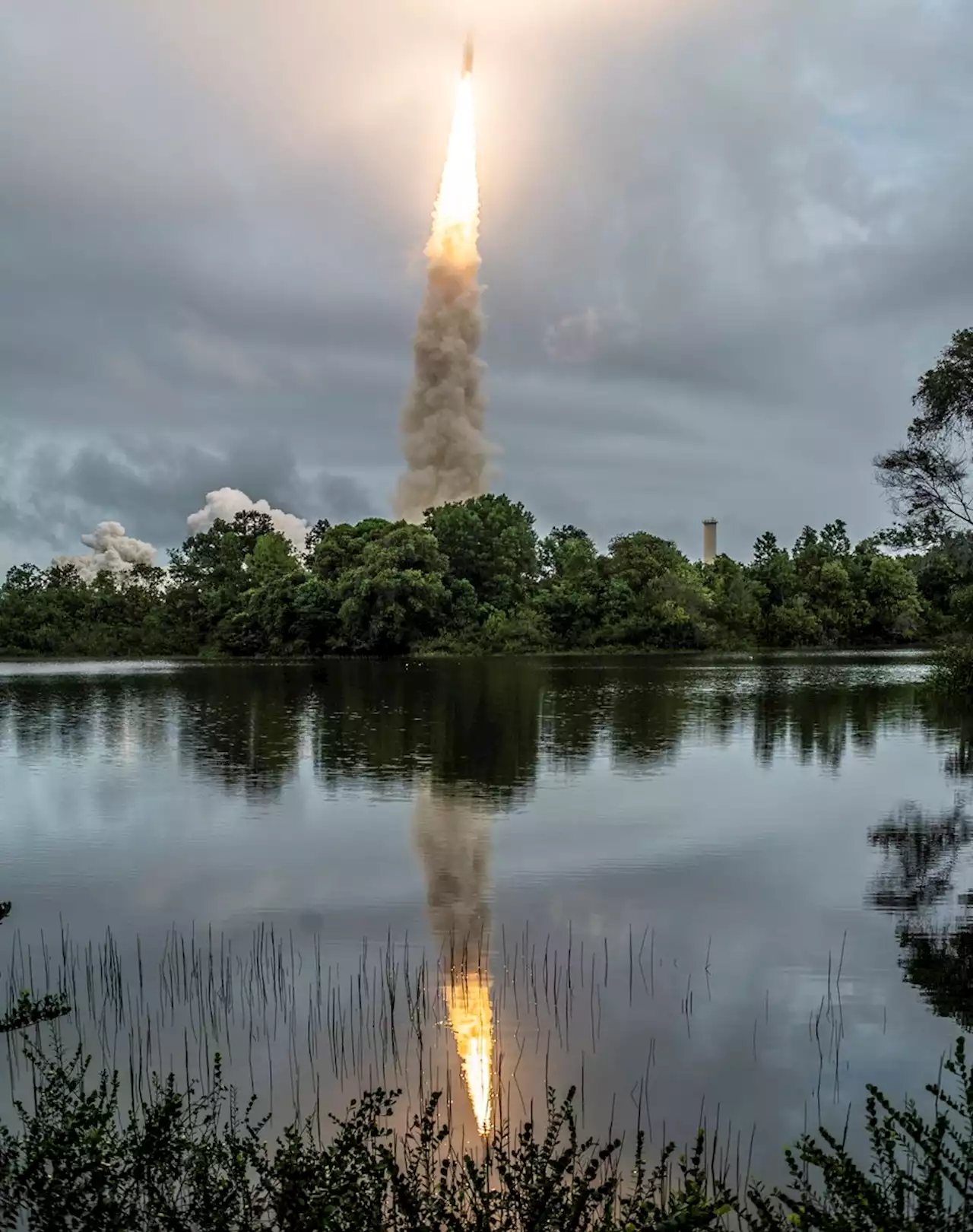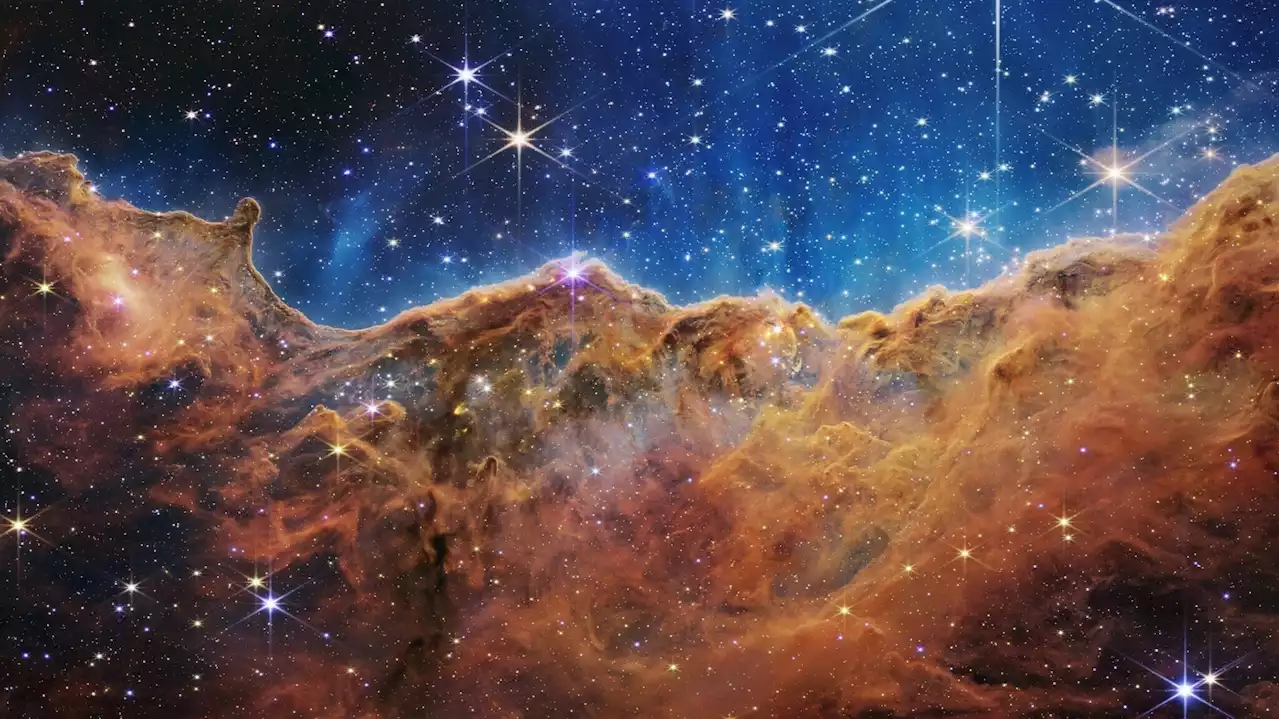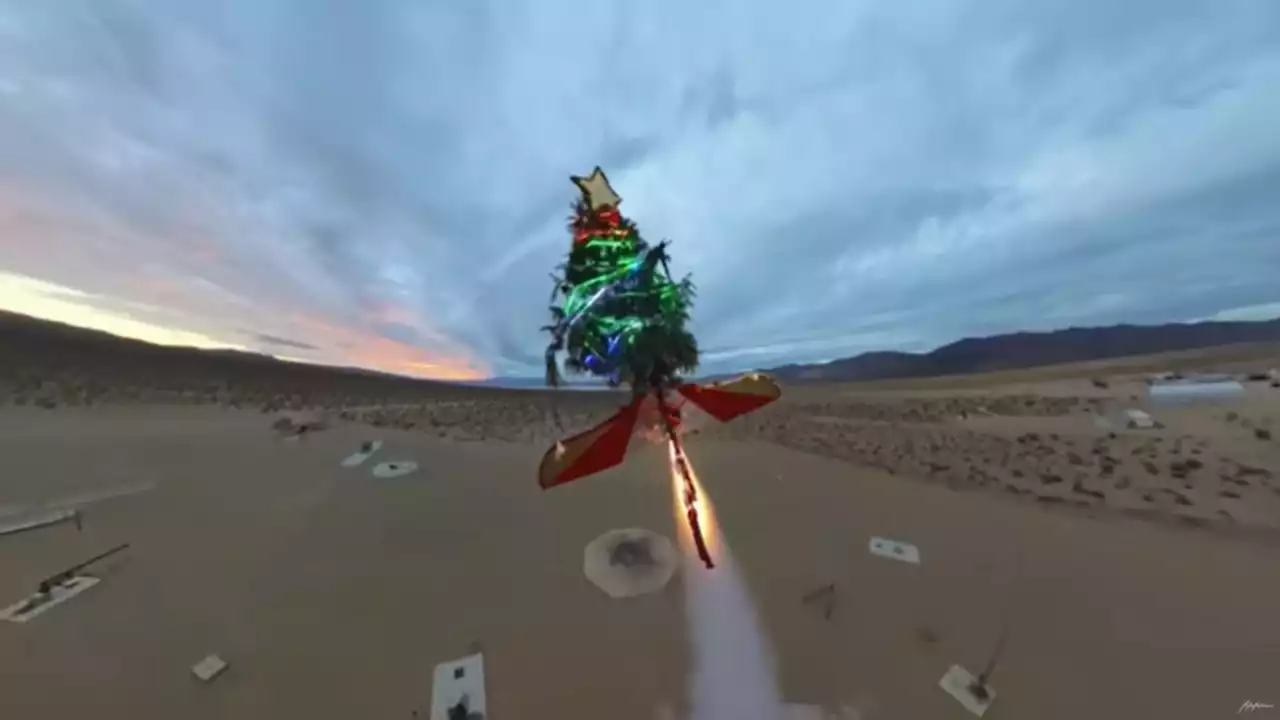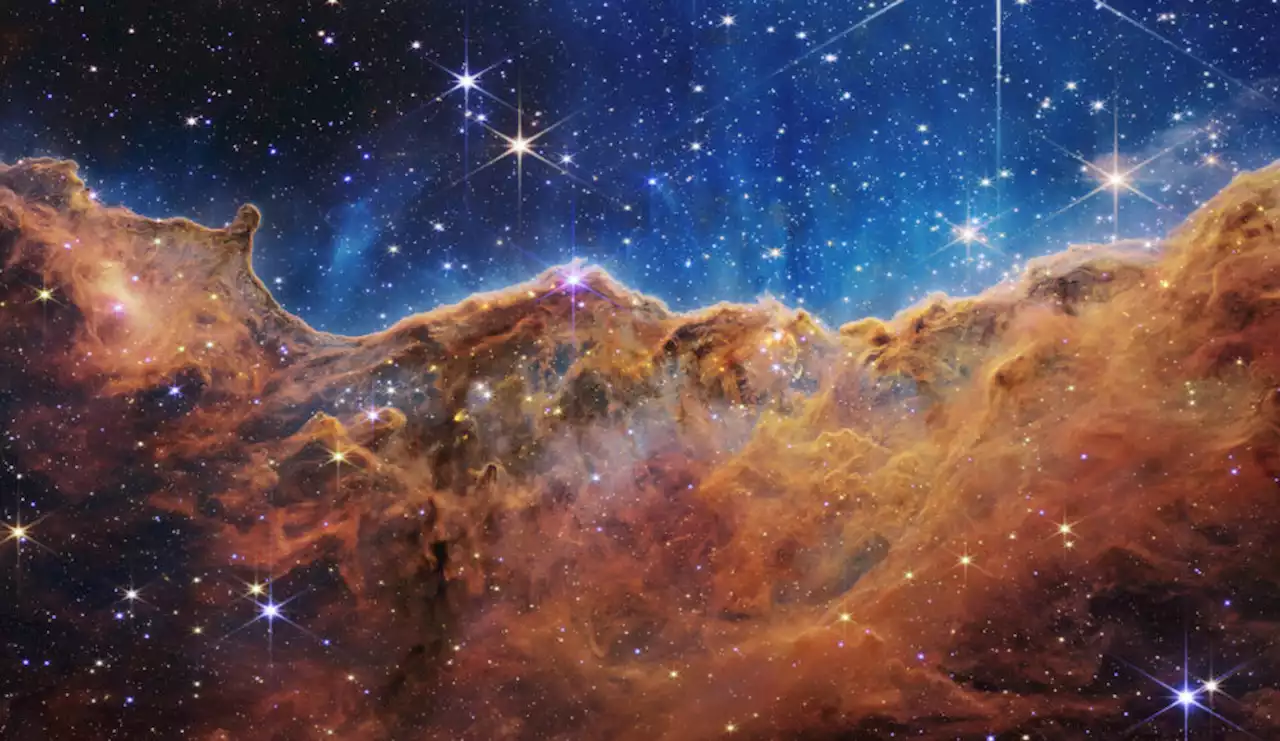Earlier this year, we finally got a glimpse of the depths of our universe. New images from the James Webb Space Telescope show the most distant reaches of the universe in the most stunning detail ever captured.
show the reaches of the universe in the most stunning detail ever captured.
“When you look out deep, deep into the universe, you are looking back in time because it took the light such a long time to get here,” Goodman says. “It's like this mishmash of galaxies of all different ages. It's really hard to appreciate it all at once.” “You kind of go, ‘oh, my gosh, we actually understand physics,’” she says. “In comparing the detailed calculations in these numerical simulations with the images, questions about the distribution of dark matter and the nature of dark energy and all of that can actually be gleaned from the detailed analysis of the colors and the shapes in those images. And that'll take years.”
Singapore Latest News, Singapore Headlines
Similar News:You can also read news stories similar to this one that we have collected from other news sources.
 Webb Image Release- Webb Space Telescope GSFC/NASAThe Latest NASA Released Webb Image is featured on this page. The James Webb Space Telescope's revolutionary technology will study every phase of cosmic history—from within our solar system to the most distant observable galaxies in the early universe. Webb’s infrared telescope will explore a wide range of science questions to help us understand the origins of the universe and our place in it. Seeking Light from the First Galaxies in the Universe Webb will directly observe a part of space and time never seen before. Webb will gaze into the epoch when the very first stars and galaxies formed, over 13.5 billion years ago. Ultraviolet and visible light emitted by the very first luminous objects has been stretched or 'redshifted' by the universe's continual expansion and arrives today as infrared light. Webb is designed to “see” this infrared light with unprecedented resolution and sensitivity. Exploring Distant Worlds and the Solar System Webb will also be a powerful tool for studying the nearby universe. Scientists will use Webb to study planets and other bodies in our solar system to determine their origin and evolution and compare them with exoplanets, planets that orbit other stars. Webb will also observe exoplanets located in their stars’ habitable zones, the regions where a planet could harbor liquid water on its surface, and can determine if and where signatures of habitability may be present. Using a technique called transmission spectroscopy, the observatory will examine starlight filtered through planetary atmospheres to learn about their chemical compositions.
Webb Image Release- Webb Space Telescope GSFC/NASAThe Latest NASA Released Webb Image is featured on this page. The James Webb Space Telescope's revolutionary technology will study every phase of cosmic history—from within our solar system to the most distant observable galaxies in the early universe. Webb’s infrared telescope will explore a wide range of science questions to help us understand the origins of the universe and our place in it. Seeking Light from the First Galaxies in the Universe Webb will directly observe a part of space and time never seen before. Webb will gaze into the epoch when the very first stars and galaxies formed, over 13.5 billion years ago. Ultraviolet and visible light emitted by the very first luminous objects has been stretched or 'redshifted' by the universe's continual expansion and arrives today as infrared light. Webb is designed to “see” this infrared light with unprecedented resolution and sensitivity. Exploring Distant Worlds and the Solar System Webb will also be a powerful tool for studying the nearby universe. Scientists will use Webb to study planets and other bodies in our solar system to determine their origin and evolution and compare them with exoplanets, planets that orbit other stars. Webb will also observe exoplanets located in their stars’ habitable zones, the regions where a planet could harbor liquid water on its surface, and can determine if and where signatures of habitability may be present. Using a technique called transmission spectroscopy, the observatory will examine starlight filtered through planetary atmospheres to learn about their chemical compositions.
Read more »
 How the James Webb Space Telescope transformed astronomy this yearOne year ago, on Christmas Day, the James Webb Space Telescope was launched. Since it began collecting data, it has captured - in stunning detail - previously unobservable stars, planets and galaxies.
How the James Webb Space Telescope transformed astronomy this yearOne year ago, on Christmas Day, the James Webb Space Telescope was launched. Since it began collecting data, it has captured - in stunning detail - previously unobservable stars, planets and galaxies.
Read more »
 ‘Pillars of Creation’: James Webb telescope shows lush landscape of space first seen by HubbleThe Webb telescope’s mirrors were made in Alabama and assembled and tested for cold resistance at NASA’s Marshall Space Flight Center in Huntsville.
‘Pillars of Creation’: James Webb telescope shows lush landscape of space first seen by HubbleThe Webb telescope’s mirrors were made in Alabama and assembled and tested for cold resistance at NASA’s Marshall Space Flight Center in Huntsville.
Read more »
 Watch an epic Christmas tree launch for the holidays by DIY 'Rocket-tree' makers (videos)Tariq is the Editor-in-Chief of Space.com and joined the team in 2001, first as an intern and staff writer, and later as an editor. He covers human spaceflight, exploration and space science, as well as skywatching and entertainment. He became Space.com's Managing Editor in 2009 and Editor-in-Chief in 2019. Before joining Space.com, Tariq was a staff reporter for The Los Angeles Times covering education and city beats in La Habra, Fullerton and Huntington Beach. In October 2022, Tariq received the Harry Kolcum Award for excellence in space reporting from the National Space Club Florida Committee. He is also an Eagle Scout (yes, he has the Space Exploration merit badge) and went to Space Camp four times as a kid and a fifth time as an adult. He has journalism degrees from the University of Southern California and New York University. You can find Tariq at Space.com and as the co-host to the This Week In Space podcast with space historian Rod Pyle on the TWiT network. To see his latest project, you can follow Tariq on Twitter tariqjmalik.
Watch an epic Christmas tree launch for the holidays by DIY 'Rocket-tree' makers (videos)Tariq is the Editor-in-Chief of Space.com and joined the team in 2001, first as an intern and staff writer, and later as an editor. He covers human spaceflight, exploration and space science, as well as skywatching and entertainment. He became Space.com's Managing Editor in 2009 and Editor-in-Chief in 2019. Before joining Space.com, Tariq was a staff reporter for The Los Angeles Times covering education and city beats in La Habra, Fullerton and Huntington Beach. In October 2022, Tariq received the Harry Kolcum Award for excellence in space reporting from the National Space Club Florida Committee. He is also an Eagle Scout (yes, he has the Space Exploration merit badge) and went to Space Camp four times as a kid and a fifth time as an adult. He has journalism degrees from the University of Southern California and New York University. You can find Tariq at Space.com and as the co-host to the This Week In Space podcast with space historian Rod Pyle on the TWiT network. To see his latest project, you can follow Tariq on Twitter tariqjmalik.
Read more »
 Webb Space Telescope Makes Stunning Discovery: Unveils Previously Shrouded Newborn StarsWebb’s infrared camera peers through dust clouds, enabling discovery. Rice University astronomer Megan Reiter and colleagues took a “deep dive” into one of the first images from NASA’s James Webb Space Telescope and were rewarded with the discovery of telltale signs from two dozen previously unseen
Webb Space Telescope Makes Stunning Discovery: Unveils Previously Shrouded Newborn StarsWebb’s infrared camera peers through dust clouds, enabling discovery. Rice University astronomer Megan Reiter and colleagues took a “deep dive” into one of the first images from NASA’s James Webb Space Telescope and were rewarded with the discovery of telltale signs from two dozen previously unseen
Read more »
 Webb Space Telescope Reveals Breathtaking Cosmic Fireballs – How Universe Became TransparentAstrophysicists shed light on how hydrogen fog burned away after the Big Bang. UCLA astrophysicists are among the first scientists to use the James Webb Space Telescope to get a glimpse of the earliest galaxies in the universe. The studies reveal unprecedented detail about events that took p
Webb Space Telescope Reveals Breathtaking Cosmic Fireballs – How Universe Became TransparentAstrophysicists shed light on how hydrogen fog burned away after the Big Bang. UCLA astrophysicists are among the first scientists to use the James Webb Space Telescope to get a glimpse of the earliest galaxies in the universe. The studies reveal unprecedented detail about events that took p
Read more »
